Throughout history, con men have preyed on unsuspecting victims. Like a chameleon (or a good salesperson), they can change their colors at a drop of a dime and gain the confidence of whomever they have targeted as a “mark.” These people range from the sinister (e.g., Rasputin) all the way to those lovable “grifters,” Paul Newman and Robert Redford in the movie, The Sting.
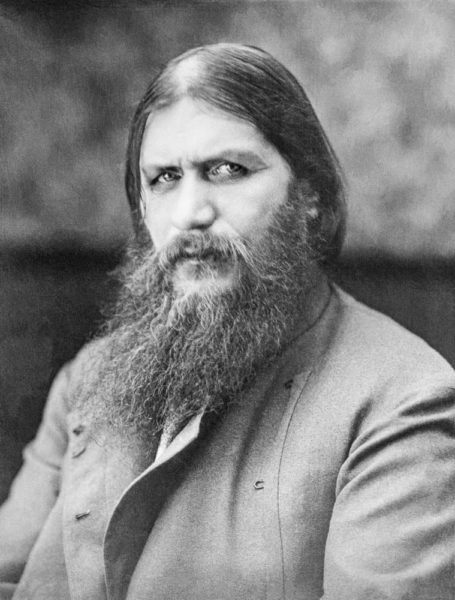
Today’s blog centers around a Catholic priest who was employed by the Abwehr (German military intelligence) for the purpose of infiltrating, betraying, and ultimately, destroying French Resistance networks. Unlike Grigori Rasputin (1869-1916) who ingratiated himself into the Russian Tsar’s family for status and power, Abbé Robert Alesch (1906-1949) sold his services to the Nazis for money, art, and a life of luxury. Normally, confidence scheme targets give up their money or jewelry. Many of Alesch’s victims gave up their lives.
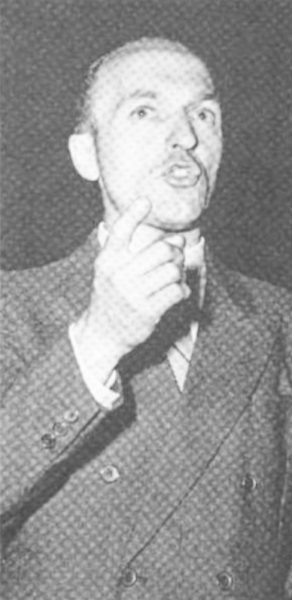
Did You Know?
Did you know there is a church in Lutherstadt Wittenberg, Germany where Martin Luther married Katharina von Bora and once preached (first Protestant service in the church was Christmas 1521)? There is a stone sculpture relief known as a “Judensau” on one of the church’s exterior walls. The relief portrays a rabbi lifting a sow’s tail and peering at its behind while two other Jews suckle on the pig. These Judensau, or Jews’ sow, were one of the ways that medieval anti-Semitics mocked Jews. There is a small contingency today who want the stone relief removed. The church’s pastor, Johannes Block, has expressed his “shame and pain” with the relief. He says, “We are trying to deal with this difficult inheritance responsibly.” A memorial to the six million Jews murdered by the Nazis was erected forty years ago next to the wall where the relief is located. An information board has been put up to explain the anti-Semitic relief in a historical perspective. A German court ruled against removing the relief but ordered the creation of the information board because the sculpture would be offensive if viewed in isolation.
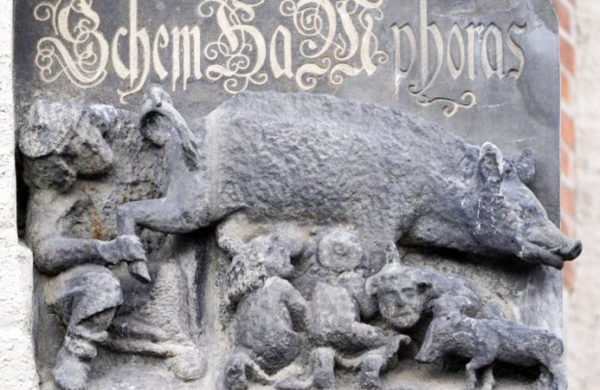
Resistance Networks
The two principle resistance networks in our story today are réseau Gloria SMH and the Special Operations Executive (SOE) circuit, Heckler. The SOE agent in charge of Heckler was Virginia Hall (1906-1982) and her base was located in Lyon while réseau Gloria operated out of Paris.
The Gloria network was co-founded by Jeannine Gabrielle Cécile Martinez Picabia (1913-1977) and Jacques Legrand (1906-1944), a French chemical engineer. Jeannine was the daughter of surrealist artist, Francis Picabia (1879-1953) and Gabrièle Buffet-Picabia (1881-1985). Jeannine and her team worked closely with SOE and British military intelligence (MI9) ⏤ the network’s intelligence information was highly regarded by London. They gathered critical information about the German army and navy including defensive positions on the northern coast of France. Creating false documentation was another specialty of réseau Gloria.
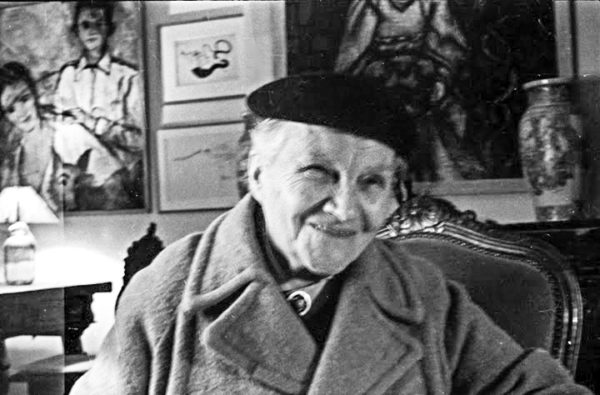
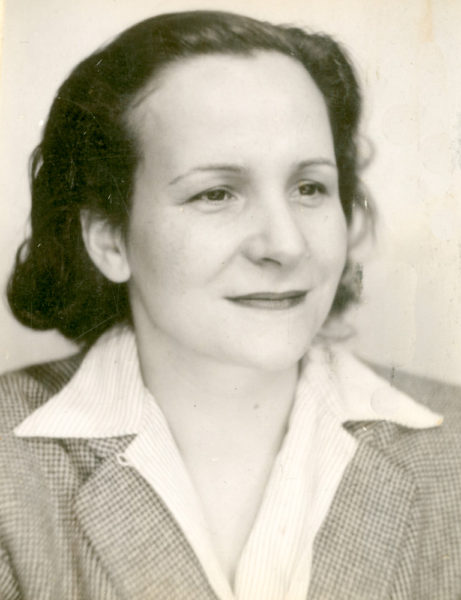
Members of the Gloria network included Alfred Péron (1904-1945), a teacher at Lycée Buffon. The future Nobel laureate, Samuel Beckett (1906-1986), met Péron while attending Trinity College Dublin during the interwar period. After the Germans occupied Paris, Péron recruited Beckett to join réseau Gloria. Germaine Tillion (1907-2006), the anthropologist and former member of the resistance network, Groupe du musée de l’Homme, joined réseau Gloria. Mary Reynolds (1891-1950), artist and mistress of the artist Marchel Duchamp, worked for réseau Gloria. Jeannine was successful in recruiting her sixty-year-old mother who was already working for the Brandy escape line. Gabrièle used her apartment at 11, rue Chateaubriand (8e) as a safe house for evaders and escapees before they traveled over the Pyrenees to Spain and then on to London. For réseau Gloria, Gabrièle carried documents back and forth between the occupied and unoccupied zones.
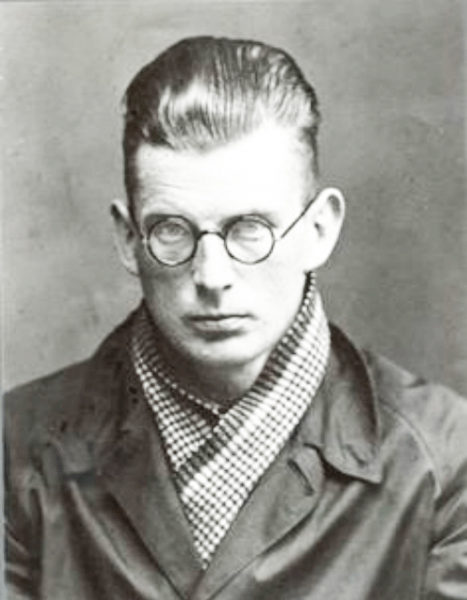
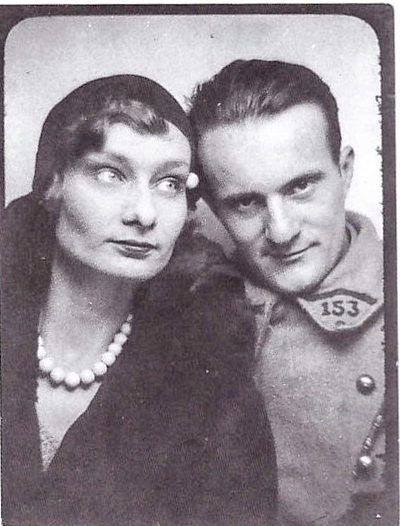
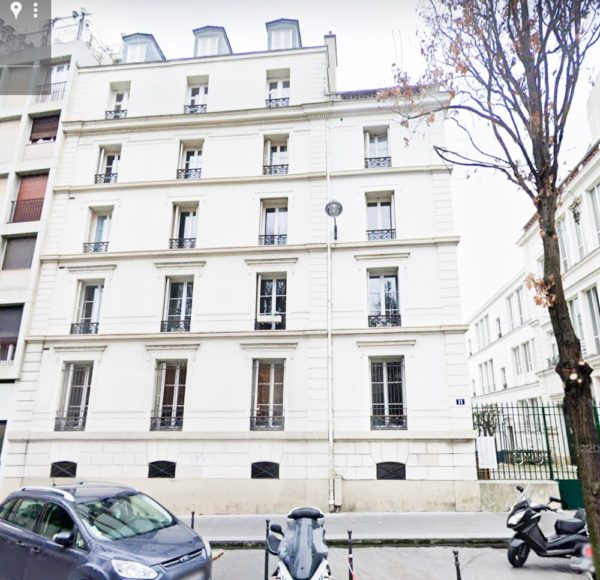
Jeannine (nom de guerre: Gloria) had worked in the French ambulance corps in 1940 where she met Virginia Hall. In February 1941, Jeannine was recruited by the Polish resistance. She came into contact with Roman Czerniawski (nom de guerre: Armand), head of the Interallié network. She refused to attach her network to Interallié as a sub-group and Armand thought Jeannine was too inexperienced to run a resistance network.
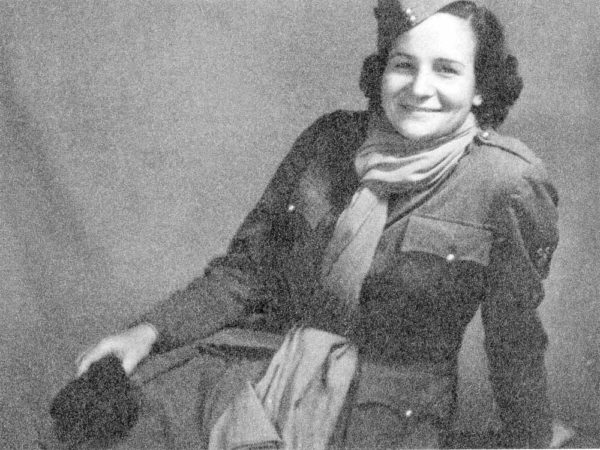
Virginia Hall (nom de guerre: Marie) arrived in France in August 1941 and went to Vichy where the French government under Philippe Pétain had established itself. A month later, she set up the Heckler circuit for the SOE in Lyon. Before America entered the war, Virginia’s cover as a journalist allowed her to move around rather freely. She began to cultivate friendships with Vichy officials as well as American embassy personnel (despite the American ambassador’s aversion to her and espionage). Virginia began almost immediately collecting intelligence on German troop movements, location of fuel depots, and a new German submarine base under construction in Marseille. Virginia was incredibly successful, and London loved her.
One of Virginia’s assistants, Dr. Jean Rousset (nom de guerre: Pépin), was a gynecologist and his office was located at 7, place Antonin-Ponchet, Lyon. Virginia recruited the local brothel madam, Germaine Guérin. Mme Guérin instructed her girls to infect the German clients with sexually transmitted diseases. She also had them collect information which was passed on to Virginia. One of Virginia’s many talents in the spy business was her ability to assess people. At a time when resistance networks were being infiltrated by Abwehr and Gestapo agents (e.g., Hugo Bleicher and Jacques Désoubrie), recognizing potential traitors was critical. Unfortunately for Virginia and other members of her team and réseau Gloria, one mistake ended up costing many of them their lives.
Abbé Robert Alesch
Alesch was a citizen of Luxembourg. He was ordained in 1933 and moved to France in 1935 where he was assigned to the parish of Saint-Maur. During his sermons, Father Alesch passed himself off as anti-Nazi and pro-Charles de Gaulle and the congregation grew to trust him ⏤ at one point, two teenage parishioners confided in him about their resistance activities and he turned the boys over to the Nazis. By 1941, Alesch had become a naturalized German citizen and approached the Abwehr with an offer to work for them as an agent. He became “Agent Axel” with code number GV7162. Alesch settled into a luxurious Paris apartment at 46, rue Spontini (16e) where he kept his two mistresses and the stolen artwork he purchased from the Nazis.
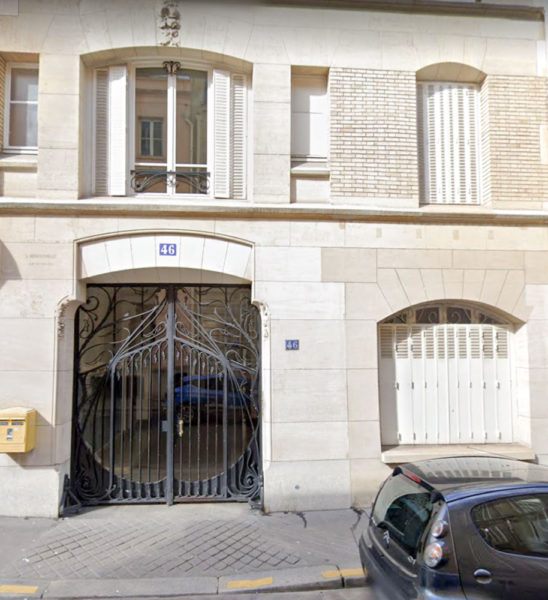
Betrayal
Lines of communication between réseau Gloria and London broke down in March 1942 when the network’s direct radio link was compromised by Gestapo arrests. Jeannine had no way to get her valuable intelligence back to SOE and MI6. So, Virginia Hall and Heckler agreed to take on the responsibility of transmitting information from réseau Gloria to London.
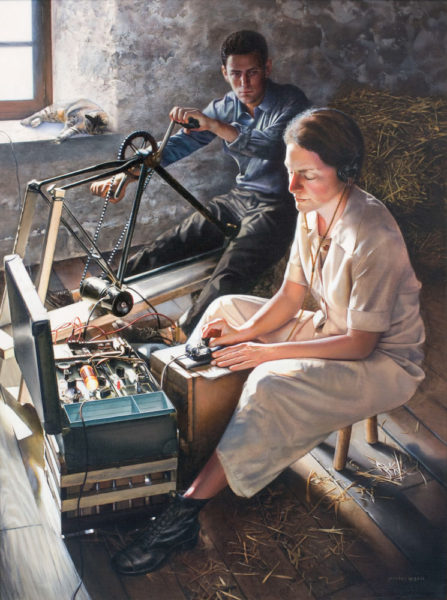
In July 1942, Legrand handed off a large number of photographs and maps to Jeannine. He told her the Gestapo was on his trail and this would be his last delivery. Legrand indicated he would entrust someone else to deliver documents in the future. On 4 August, a young priest presented himself to Dr. Rousset in Lyon and introduced himself as the new courier for WOL from Paris (réseau Gloria had recently been renamed WOL). Dr. Rousset was a devote Catholic and immediately trusted Father Alesch. The priest handed the documents to Dr. Rousset with instructions they were to be given to Virginia (Alesch knew her only by her nom de guerre, Marie). Alesch, as the WOL courier, knew all the right code names ⏤ Marie, Pépin, and passwords. Alesch demanded two hundred thousand francs to deliver to Jeannine and WOL. Dr. Rousset did not have the money since Virginia was not aware a package was being delivered. So, Alesch said he would return in a week to get the money. It was mid-August and he was to be delayed because of a decision made by his Abwehr and Gestapo handlers.
Father Alesch returned three weeks later for his money. He demanded to see Virginia/Marie. After she arrived and was introduced to the new courier, Virginia was shocked that the man standing in front of her had a German accent. Alesch explained that he was from Alsace (a border region between France and Germany) and that his father had been executed by the Germans. Both Dr. Rousset and Legrand had vouched for the priest, so Virginia gave him the cash. She needed the intelligence WOL could provide and against her intuition, decided to continue interacting with Alesch whom they gave the nom de guerre, Bishop.
By mid-August, the Nazis decided it was time to bring the hammer down on WOL. Alesch led the Gestapo to a bistro in central Paris where he was to meet with Germaine Tillion and another high ranking WOL agent. Shortly after the meeting, Tillion and the other agent were taken into Gestapo custody. For several weeks, Alesch directed the Gestapo to other members of WOL. Next up for the priest was Virginia Hall and the Heckler circuit.
Virginia was rocked by the news that WOL agents were being arrested by the Gestapo and that Legrand and Tillion were both in the hands of the Gestapo. Then, on 1 September, a MI6 agent ⏤ code name Blanchet ⏤ showed up and demanded cash and a pistol. MI6 confirmed Blanchet was a traitor (he was in fact, working for the Abwehr agent, Hugo Bleicher) and Virginia was issued a “license to kill” if Blanchet persisted.
The next day, Alesch met with Virginia who confronted him about the coincidence of the arrests and his activities. He explained his way out of it but stumbled when Virginia asked him to describe Jeannine’s physical appearance. Alesch said she was tall and blonde when in fact, she was short and brunette. He immediately knew he was wrong and redirected the discussion. When he asked to be introduced to the other members of her team, Virginia’s skin crawled. She still couldn’t believe he was a traitor because of the priest’s intimate knowledge about her connection with WOL. Virginia asked London to check on him but several days later, SOE conceded they had found nothing. Their advice to Virginia was to cut him loose. Unfortunately, Virginia did not listen to her bosses.
Dr. Rousset still believed in Alesch and Virginia continued to be supplied with valuable information by the priest. She handed over one hundred thousand francs and a wireless radio set to him on 1 October. Despite some doubts, Virginia, her team, and London continued to have faith in l’abbé Alesch because the information he brought them from Picabia was so valuable. The problem was Alesch never met Jeannine Picabia nor did he ever turn over any of the money to her that Virginia had earmarked for the WOL. The information he gave to Virginia was supplied and doctored by the Nazi High Command to mislead London.
Between his initial contact with Dr. Rousset and meeting with Virginia three weeks later, Alesch put in motion the traps which would snare more than eighty WOL agents, many of whom would never return after the war. The Nazis paid him twenty-five thousand francs a month for his efforts and sold him stolen fine art for his apartment. Father Alesch was a rich celebrity at the Hôtel Lutetia, headquarters of the Abwehr. As a result of Alesch’s infiltration, Nazi intelligence knew all about Virginia; someone they had been looking for for a long time (they called her the “limping lady” as she had lost a leg in a hunting accident before the war).
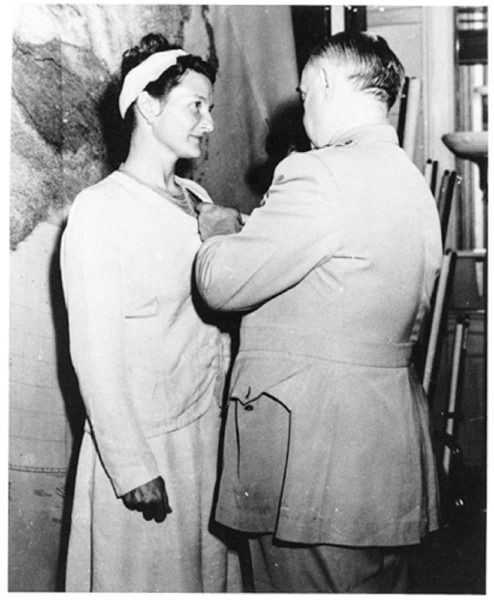
Virginia and Jeannine knew the Gestapo was closing in on them quickly and they would need to get back to London.
Aftermath
Virginia Hall – In anticipation of the German invasion of Vichy, Virginia escaped from France in early November 1942 and made her way back to London. She joined the American Office of Strategic Services (OSS) in March 1944 and returned to occupied France to fight with the Maquis (resistance guerilla fighters). Virginia never forgave herself for being hoodwinked by Alesch leading to the deaths of many Heckler and WOL members.
Jeannine Picabia – Jeannine escaped in December 1942 with the assistance of the Brandy escape line.
Gabriéle Picabia – Gabrièle escaped from France with the assistance of an escape line.
Jacques Legrand – Legrand was arrested, tortured, and deported to Mauthausen concentration camp where he was murdered.
Dr. Rousset/Germaine Guérin – Dr. Rousset and Mme Guérin were arrested and sent to the concentration camps. They survived but Dr. Rousset was never himself afterward.
Alfred Péron – Péron was arrested and sent to Mauthausen. He was liberated but died two days later.
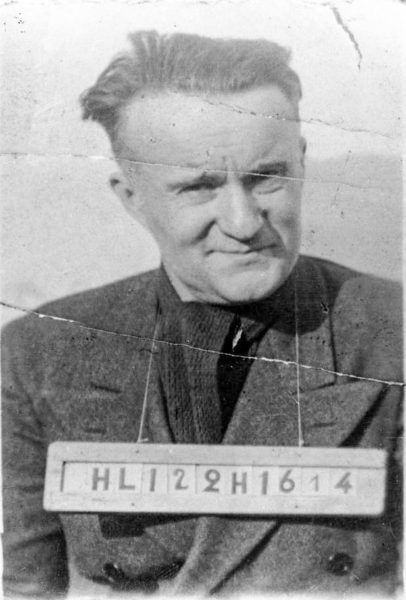
Germaine Tillion – Tillion was arrested and deported to Ravensbrück concentration camp where she survived. She and Jeannine witnessed Alesch’s trial in 1949.
Samuel Beckett – Beckett and his companion (later wife), Suzanne Deschevaux-Dumesnil were warned in time by Mme Péron and managed to flee to the south of France where they hid until the war was over.
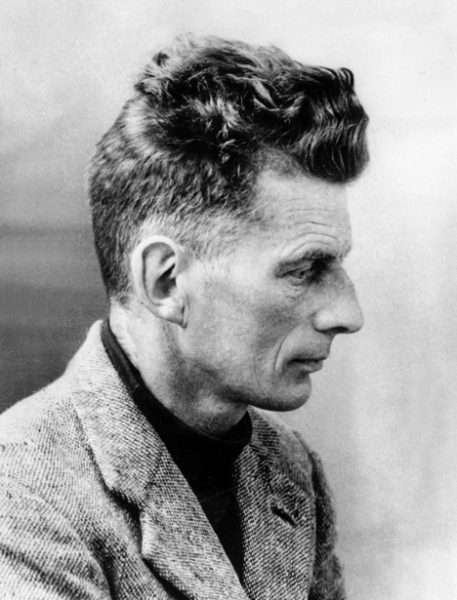
Mary Reynolds – Reynolds escaped from France via one of the escape lines.
Robert Alesch – Alesch made his way to Belgium as the war was winding down and presented Belgium officials with a false recommendation letter from the archbishop of Paris. He was protected until May 1945 when his past caught up to him. Alesch fled Belgium and returned to Luxembourg. However, he shortly returned to Belgium where he surrendered to the Americans on 2 July 1945. Alesch tried to make deals with the Americans to save his skin but Virginia Hall’s reports told the whole story and the OSS interrogators were not fooled.
Alesch was finally put on trial on 25 May 1948 in Paris. There certainly was no shortage of witnesses including Mme Guérin and Dr. Rousset. His defense was insanity but one of the witnesses correctly pointed out it was depravity rather than delusion. The media called him the “Rasputin of the Abwehr.” The priest was found guilty and sentenced to death. On 25 February 1949, Alesch took his final communion before being shot in front of a firing squad at nine in the morning.
✭ ✭ ★ Learn More About Abbé Robert Alesch ✭ ★ ★
Haines, Gerald K. Virginia Hall Goillot: Career Intelligence Officer. Article in Prologue: Quarterly of the National Archive. Spring 1994: Volume 26, No. 1.
Janes, Keith. They Came From Burgundy: A Study of the Bourgogne Escape Line. Leicestershire: Matador, 2017.
Nouzille, Vincent. L’espionne: Virginia Hall, une américaine dans la guerre. Paris: Fayard, 2007 (French version).
Purnell, Sonia. A Woman of No Importance: The Untold Story of the American Spy Who Helped Win World War II. New York: Viking Press, 2019.
Rossiter, Margaret L. Women in the Resistance. New York: Praeger Publishers, 1986.
Tremain, David. Double Agent Victoire: Mathilde Carré and the Interallié Network. Gloucestershire: The History Press, 2018.
What’s New With Sandy and Stew?
I hope all of you are doing well. Sandy and I are looking forward to the world returning to pre-COVID. Our 2021 cruises are beginning to get cancelled and I’m afraid next year will be another “washout” in terms of traveling. On the positive side, it will allow me to finish the second volume of the walking tour through Nazi occupied Paris. We will also make plans to travel in the United States. Over the years, we’ve seen a lot of our wonderful country but there are still parts of it that we want to visit (e.g., Monument Valley).
Thank you to all of you who subscribe to our bi-weekly blogs. It seems there isn’t a day that goes by where we don’t increase our readership. Please let your history buff friends and family members know about our blogs.
Someone Is Commenting on Our Blogs
I’d like to thank Linda A. for bringing the Gloria network to my attention. She is writing a historical fiction book with the story and characters wrapped around réseau Gloria and the Lycée Buffon. I’m looking forward to reading Linda’s book.
If there is a topic you’d like to see a blog written about, please don’t hesitate to contact me. I love hearing from you so keep those comments coming.
Why Would You Want to Buy Our Walking Through History Books?
Simple.
You like to travel and experience history and historical events. You like to see original buildings that had a significant impact on the people and events of the history you’re engaged with. You want to know the stories behind the brick and mortar in front of you.
The walking tour books are meticulously researched so you can go directly to those sites and learn about the building’s history as well as an introduction to some of the more interesting people associated with it.
We Need Your Help
Please tell your friends about our blog site and encourage them to visit and subscribe. Sandy and I are trying to increase our audience and we need your help through your friends and social media followers.
Thank You
Sandy and I appreciate you visiting with us. We have some exciting things on the horizon, and we’ll keep you updated as we go along.
Share This:
Follow Stew:
Find Stew’s books on Amazon and iBooks.
Please note that we do not and will not take compensation from individuals or companies mentioned or promoted in the blogs.
 Walks Through History
Walks Through History
Copyright ©2020 Stew Ross


Great story! I wonder what in the priest’s background convinced him to blatantly break all of his religious vows.
Hi Jane. Great to hear from you again! I’m glad you enjoyed the blog. I was motivated to write this story after hearing from Linda A. who is writing a historical novel based on réseau Gloria and the priest. I had never heard of Gloria or the traitor priest. I really can’t answer your question about the priest. Money was the prime motivator but why he turned his back on his church and vows, I don’t know. He exhibited the unsavory traits some of us human beings possess. Hope to hear from you again and thanks for being a loyal reader of our bi-weekly blogs. STEW
Thanks for gathering this information! I’m doing background reading as I make my way through Purnell’s A Woman of No Importance. You might enjoy reading it. 🙂
Hello,
Thank you for contacting us. Yes, I have read “A Woman of No Importance.” It is a good book and I like Purnell’s writing style. Another good book on Virginia Hall is “The Wolves at the Door” by Judith Pearson. Again, I appreciate you reading the blog and I hope you’ll consider subscribing to our bi-weekly blog. STEW
Fyi…this man was my father’s second cousin. Despicable person and I can’t believe he is a distant relation. I have letters from my dad to Robert’s sister Mimi where she refers to Robert’s travels to Berlin.
Hi Jon; Thanks for contacting us about the blog on Robert Alesch. You are correct. He was a “despicable person” but frankly, he fit in with all those other Nazi monsters. It is a conundrum how basically good people can turn into cruel and brutal human beings. It is something the historians are still debating. The women who served the SS as camp guards are a prime example. If you have more family history on Robert, I’d love to hear about it. Again, thanks for the response. STEW
I think…people like Robert(my distant cousin) were weaponized by the deceit and propaganda of the Nazi’s. Corrupted, twisted and empowered to follow their worst inclinations and vices to serve their dark purposes. We can see this kind of right-wing indoctrination today in the United States (and other countries)and the fomenting of hate against immigrants, “liberals” any anyone who doesn’t agree with the right-wing agenda. Truth will prevail!
You sound like your distant cousin. I think your comment is what is going on right now.
I agree with Rosemarie.
Follow the money is a very helpful way to sort out what’s going on in the world.
Hi Shirley; Yes, many situations start with that phrase. STEW
I am so happy for your blog. Just saw the movie “A Call to Spy” and it was hauntingly impressive. Since then, I been digging for more information on this story line which is how I found your page. So many more people were involved and died for this cause. Those small women carrying heavy “wireless” machines and lasting only 3 weeks (average) before being discovered. Today’s society could not handle it. These type of movies (which never gets big box-office returns) introduces US to forgotten history. Thank you.
Hi Rosemarie; thank you for contacting us. Thank you for your kind comment about the blog. You are correct about the movies and how they introduce us to a seldom known topic and participants. Unfortunately, Hollywood tends to take “liberties” with the facts and that is the major complaint I have with them. The movies should come in many cases with the label “Historical Fiction.” Thanks again for reaching out to us. I hope you enjoy our future blogs. STEW
I have researched into ww2 history for many years, especially SOE. I had never come across Alesch until. I watched To Call a Spy, Unfortunately collaboration and betrayal in occupied countries was mostly motivated by financial gain which ultimately led to the torture and death of many.
Thanks Susan for your comment regarding the blog. I’m not surprised you had never come across Alesch. His story and role as a collaborator have not been widely explained. You are correct. Money was the motivating factor for most of these traitors and collaborators. The Germans (and Gestapo in particular) paid handsomely for their services. I hope you enjoy our future blogs and perhaps might find a past blog that will interest you. STEW
Really are some new, for me, cans of worms there (no offense or slander implied to the worms who are lovely little wriggly creatures). I got here, to your site, via Sam Beckett. The fixes wars put good men in .. quite hard on men’s and women’s integrity. Imagine what kind of things along the deceit trail are going on now in Ukraine. Déjà vu, all over again .. we will learn, when?
Hi John; Yes, déjà vu all over again. When will we learn? Never. STEW
Hi – thank you. This is very interesting. I am reading Beckett’s biography “Damned to fame” by J Knowlson. I would like to point out a minor error in your story: Beckett was never a student al Lycee Buffon.
Hello. Thank you for not only reading our blog but catching an error I made. I have researched this in greater detail and you are correct. Beckett met Alfred Peron while a student at Trinity College Dublin. When Peron moved to Paris and became a teacher at Lycée Buffon, he recruited Beckett for the resistance. We will update the blog to reflect the correction. Again, greatly appreciated to have you point out this error. Hope you will stay in touch. STEW